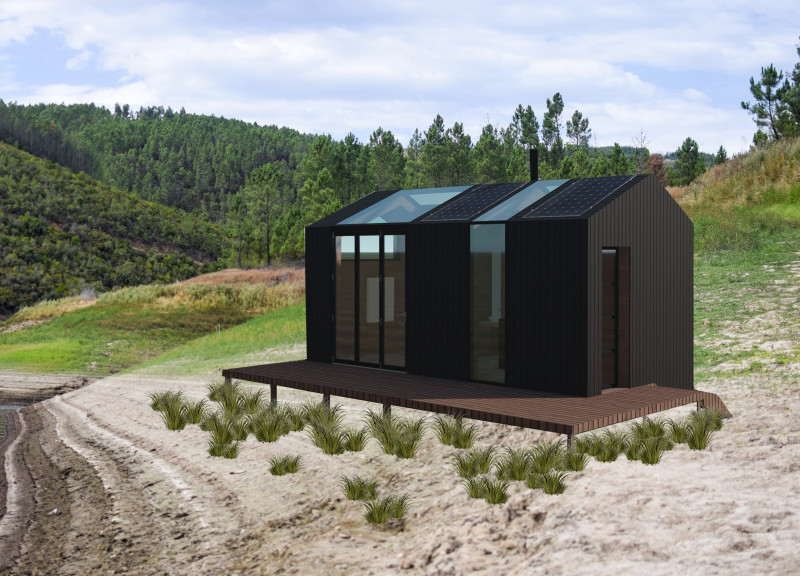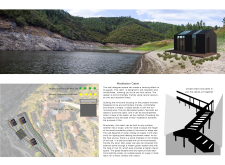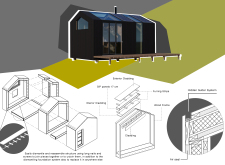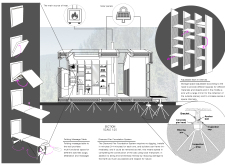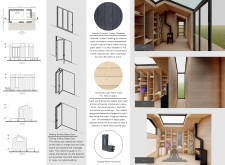5 key facts about this project
The design of the cabin prioritizes openness and simplicity, utilizing large glass panels that facilitate engagement with the natural landscape. This seamless connection between interior and exterior allows for ample natural light, fostering a serene atmosphere ideal for meditation and yoga practices.
Sustainable materials are central to the project’s identity. The use of Structural Insulated Panels (SIP) for walls and roofs ensures high energy efficiency and insulation while maintaining a minimal environmental footprint. Charred timber cladding adds durability and aesthetic appeal, complementing the natural elements of wood and enhancing the cabin's resilience against weather and pests. Additionally, light pane wood is used for interior finishes, creating an inviting and warm ambiance.
Unique Design Features and Sustainable Practices
The Meditation Cabin distinguishes itself through several innovative design approaches focused on sustainability and functionality. The incorporation of a Diamond Pier Foundation minimizes site disturbance, aligning with eco-friendly practices that prioritize the preservation of the surrounding landscape. This foundation allows for quick installation while supporting the structural integrity of the cabin.
Solar panels on the roof are a notable feature, contributing to the cabin's energy needs and supporting the long-term sustainability of the space. The presence of a wood fireplace serves as a central gathering point while ensuring a comfortable indoor climate. Additionally, the outdoor deck area, designed for yoga and relaxation, offers users direct access to nature, highlighting the project’s commitment to holistic well-being.
The project also integrates built-in storage solutions, such as adjustable shelves and a folding massage table, which adapt to diverse activities while maintaining an organized and uncluttered environment. This multifunctionality emphasizes the design’s intent to serve various purposes, whether for solitary meditation, group activities, or personal retreats.
Architectural Composition and Spatial Design
The spatial organization of the Meditation Cabin effectively balances openness and intimacy, allowing for distinct areas dedicated to meditation, yoga, and social interaction. The layout fosters a natural flow throughout the cabin, facilitating ease of movement and engagement with both interior and exterior spaces.
Attention to detail is evident in the hidden gutter system, which directs rainwater away without disrupting the aesthetic of the design. This strategic integration of infrastructure demonstrates a high level of consideration for both functionality and visual appeal.
The overall architecture of the Meditation Cabin is a synthesis of modern design principles and sustainable practices, resulting in a space that supports mental well-being while minimizing its ecological impact.
For an in-depth understanding of the architectural plans, sections, ideas, and overall design of the Meditation Cabin, I encourage you to explore the project presentation.


